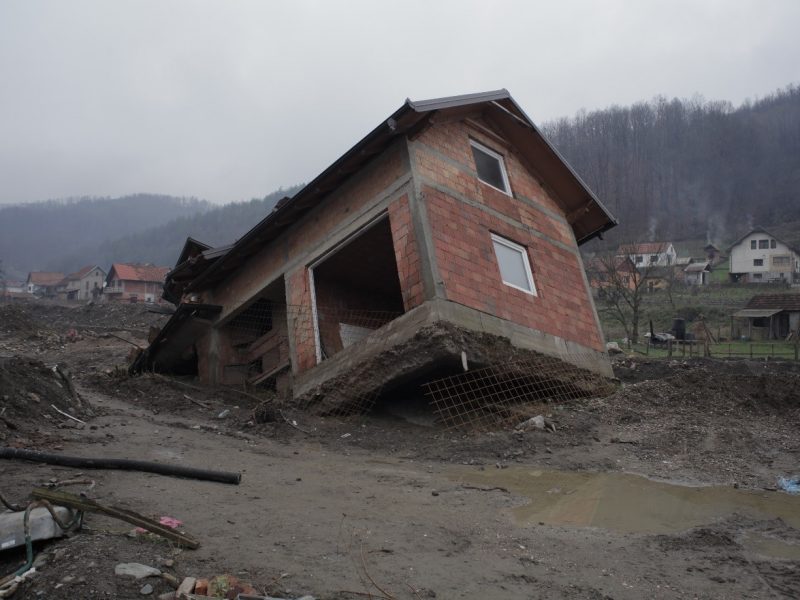In the Republic of Serbia, a unique model of local DRR cooperation and collaboration has been developed since 2016, based on the common risks from floods, landslides and forest fires on the river basin level. This was strongly supported by the Public Investment Management Office (PIMO), as the national government body, and the Standing Conference of Towns and Municipalities (SCTM) association. Local self-governments from two river basins (Western Morava and Kolubara) established Protocols of Collaboration, defining common goals, plans and obligations. SEE URBAN project supported analysis of the actions undertaken, further needs and regional perspective of such cooperation modality, by producing an Analytical Study of the Western Morava DRR Collaboration Example and related supporting documents.
By December 2018, five local level DRR cooperation protocols were signed in Serbia, gathering 60 towns and municipalities (over 35%):
- Western Morava River-Basin Cooperation Protocol (17 LSGs),
- Kolubara River-Basin Cooperation Protocol (8 LSGs),
- Great Morava River-Basin Cooperation Protocol (12 LSGs),
- Upper Danube – Banat Watercourses River-Basin Cooperation Protocol (19 LSGs),
- Drina River-Basin Cooperation Protocol (8 LSGs).
Similar efforts were initiated in the Lower Danube River Basin – Backa Watercourses, and the Southern Morava River Basin.
SEE URBAN project in Serbia established an Expert Working Group (EWG), gathering enthusiastic professionals from various institutions: Ministry of Public Administration and Local Self-Government, Ministry of Finance, Sector for Emergency Management – Ministry of Interior, Public Investment Management Office, PWE Srbijavode, Standing Conference of Towns and Municipalities and local representatives. The EWG facilitated a dialogue on challenges for initiation and implementation of joint local-level DRR activities.
SEE URBAN project directly contributed to the Amendments to the Law on Local Self-Governments of the Republic of Serbia, which was adopted in June 2018, namely to Articles 88a – 88d, which enable higher levels of formalization of the inter-municipal cooperation in the area of disaster risk reduction and management.
A Letter of Support from the Minister of Public Administration and Local Self-Government, Mr. Ruzic, was sent to His Excellency Ambassador of the European Union to Serbia, Mr. Fabrizi, regarding SEE URBAN’s importance for operationalization of inter-municipal cooperation: “SEE URBAN, the regional DG ECHO financed Project implemented by UNDP has supported this unique, grass-root efforts by the cities and towns in Serbia. This Project also served as a tool to inspire Amendments, but also to support inter-municipal cooperation which was initiated. Therefore, I would like to use this opportunity to thank you, on behalf of my Ministry and the local self-governments in Serbia for the support which SEE URBAN has provided in finding ways for efficient cooperation modalities for local self-governments, for the purpose of strengthening their resilience to natural disasters.”
Strong high-level political support was provided during implementation of the entire project.
Moreover, SEE URBAN project in Serbia supported development of the Draft Law on Voluntary Firefighting and the Draft Law on Disaster Risk Reduction and Emergency Management, which were adopted in November 2018. The local DRR connectivity models gave stronger voice to local self-governments in Serbia, which are tasked with primary risk reduction and response mandate in Serbia, so the local self-governments took important part in the public debate on the aforementioned laws and advocated well for their interests
Withn the SEE URBAN project in Serbia, various events were organized:
In the DRR e-library, documents comprising Serbian DRR Legislative Framework can be seen, as well as various Studies and Analyses. Moreover, there are several documents developed particularly within the SEE URBAN project:
The promotion of SEE URBAN project in Serbia was extremely successful, with over 65 media features issued, showing high interest of stakeholders for disaster risk reduction and strengthening of local resilience.








